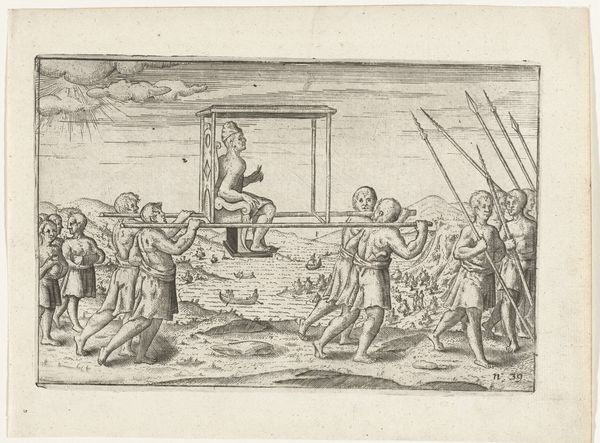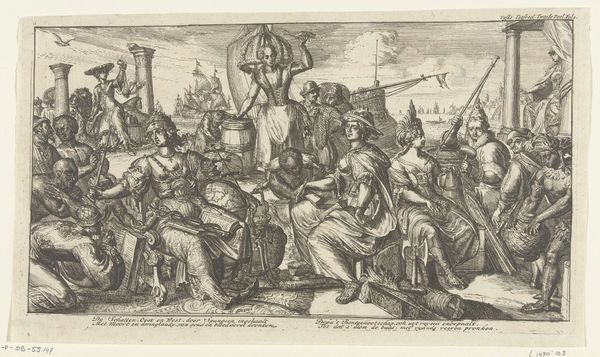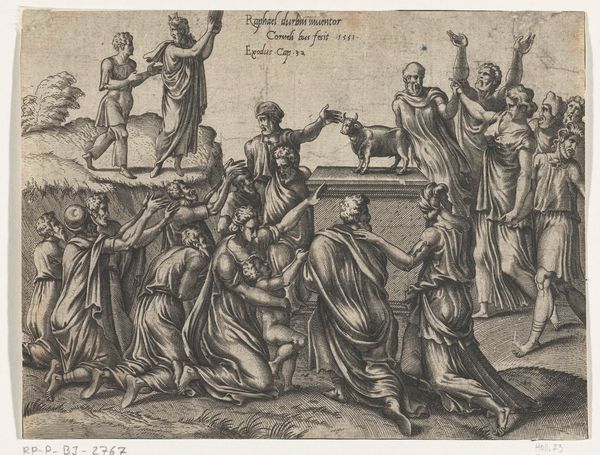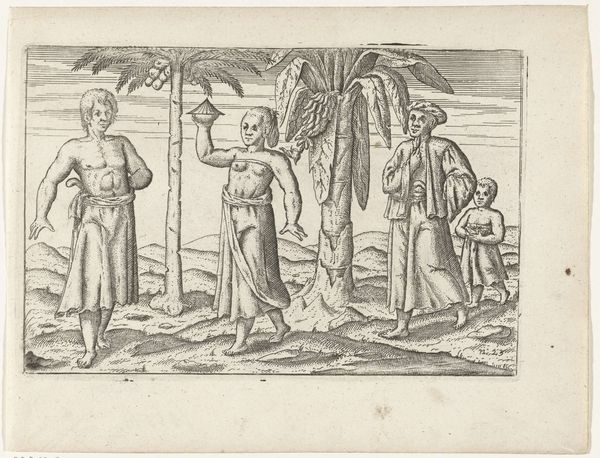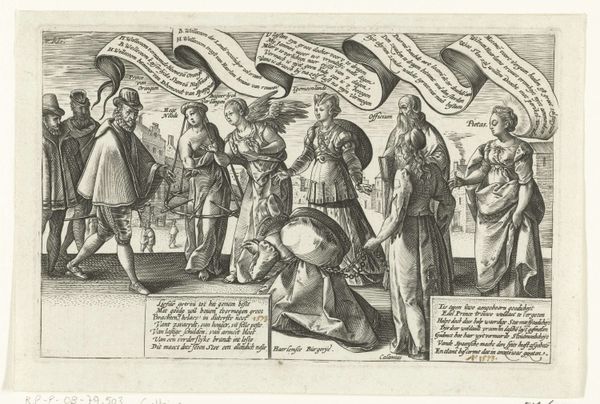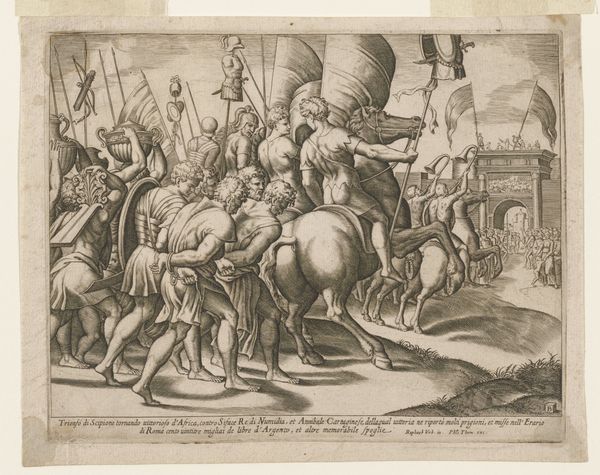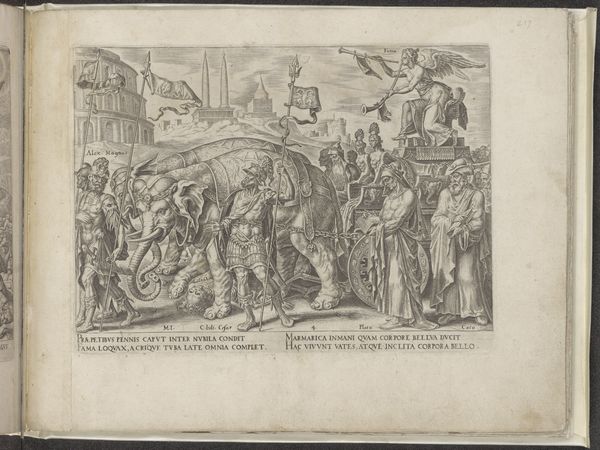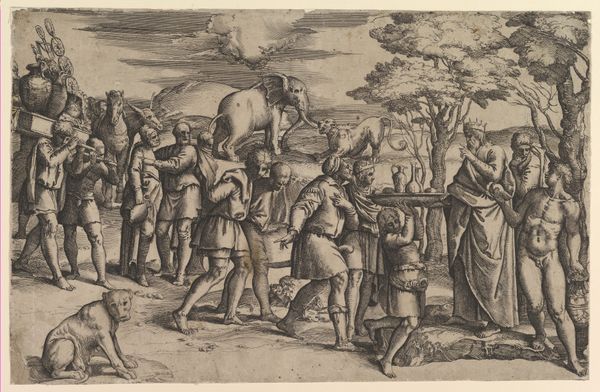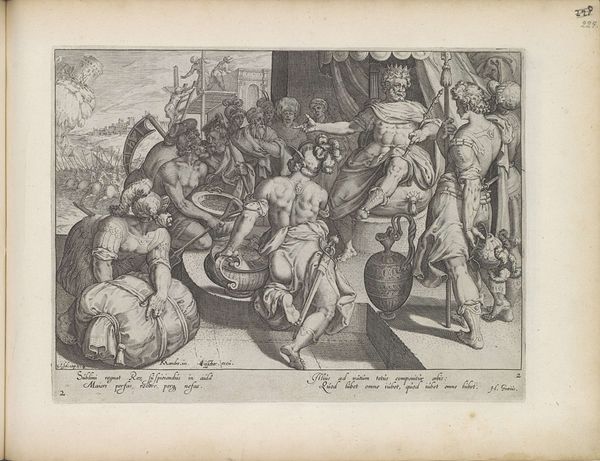
drawing, print, engraving
#
drawing
# print
#
figuration
#
genre-painting
#
history-painting
#
engraving
Dimensions: height 145 mm, width 220 mm
Copyright: Rijks Museum: Open Domain
Editor: So, this print, "De koning van Bali in zijn wagen," from around 1597 to 1646, artist unknown, at the Rijksmuseum… it feels so… staged? Almost like a historical re-enactment rather than an authentic depiction. How do you read it? Curator: Indeed. Considering its time, think about the print's function within the Dutch colonial project. These images served to document, and thus, exert control over newly encountered cultures. How might the 'staging,' as you put it, reinforce a power dynamic? Editor: That’s interesting. It feels like it’s presenting a clear, almost simplified, view of Balinese society for a European audience. Almost like propaganda? Curator: Precisely. Look at the portrayal of the Balinese king and his entourage. How does it compare with the depictions of European monarchs at the time? Editor: Well, the king looks…almost Roman? With his bare chest and the chariot. There’s a classical grandeur that doesn’t quite ring true, knowing it's Bali. So the image kind of ‘translates’ Bali into a European visual language, probably reassuring viewers back home, but also potentially misrepresenting it. Curator: Exactly. The artist, while perhaps aiming for documentation, inevitably filtered their observations through a European lens. That filtered lens served political and ideological functions back home. So, beyond the visible scene, the work gives us insight into European attitudes during the early stages of colonialism. Editor: It's really making me consider who the intended viewer was, and what biases they might have brought to it. I’ll never look at these historical prints in the same way. Curator: The politics of imagery always operates in this manner. That consideration of perspective transforms our experience of a piece.
Comments
No comments
Be the first to comment and join the conversation on the ultimate creative platform.
